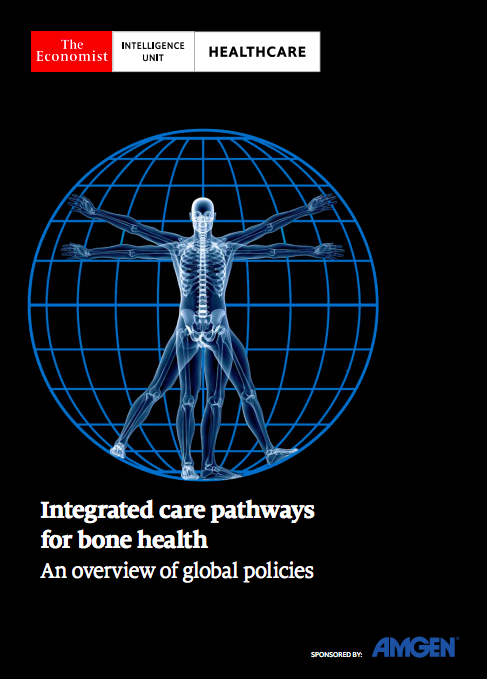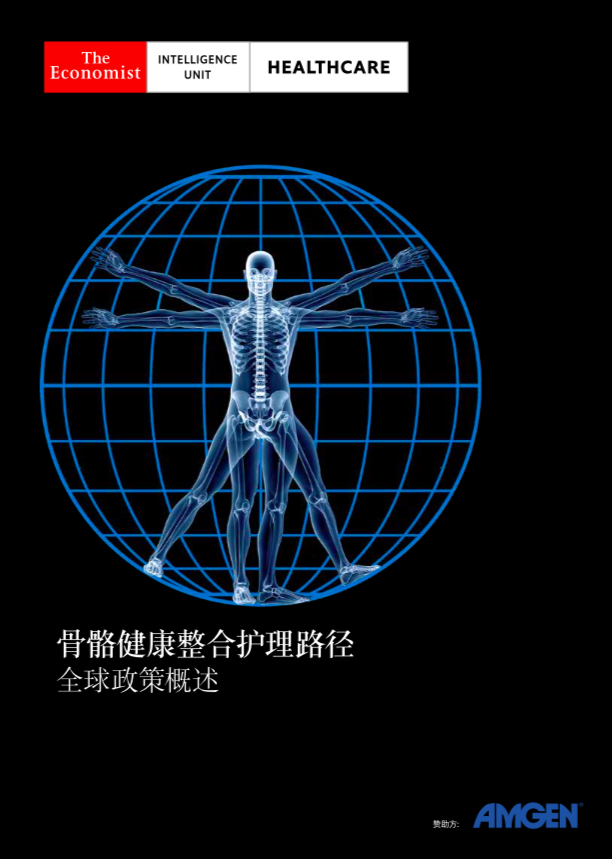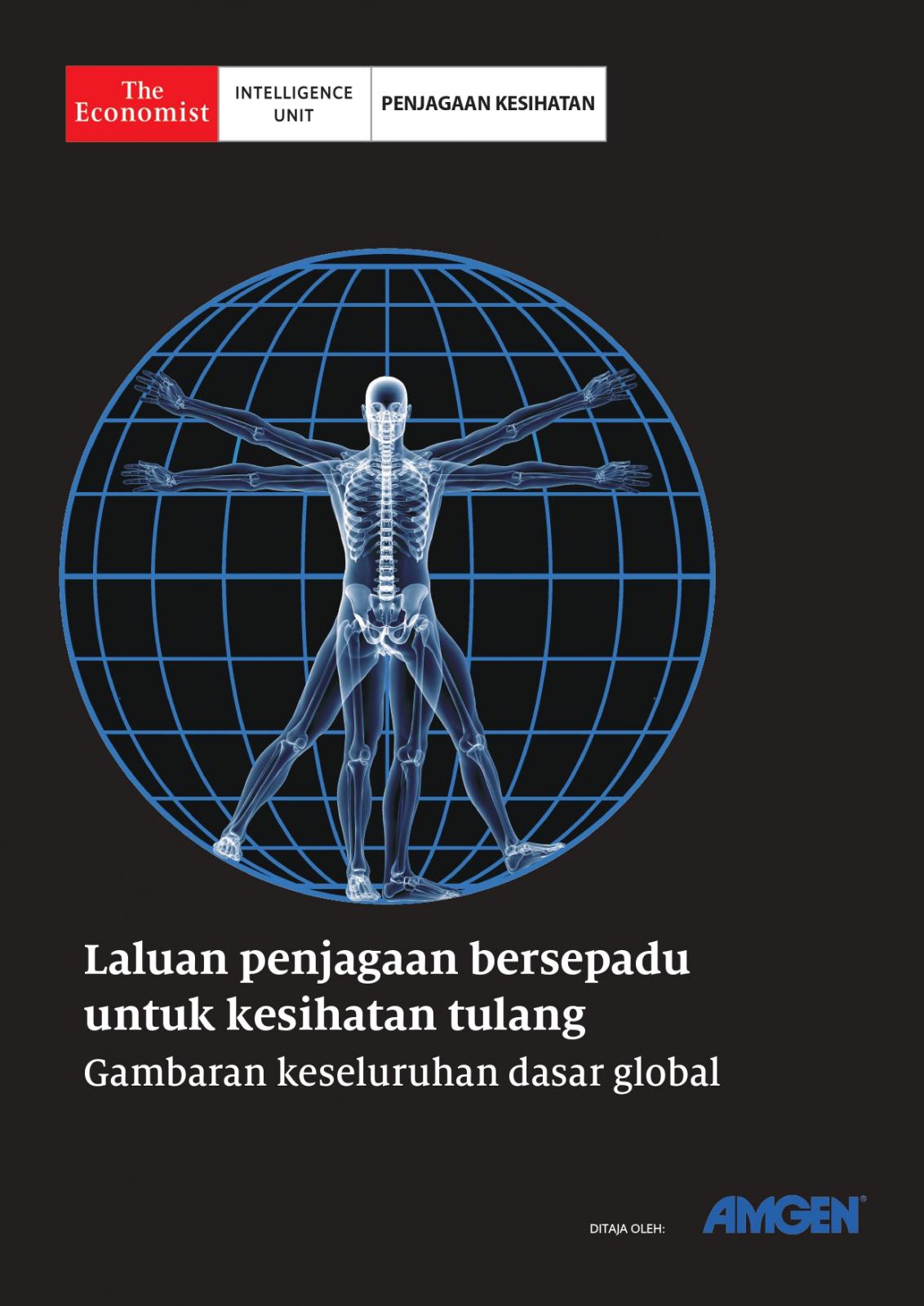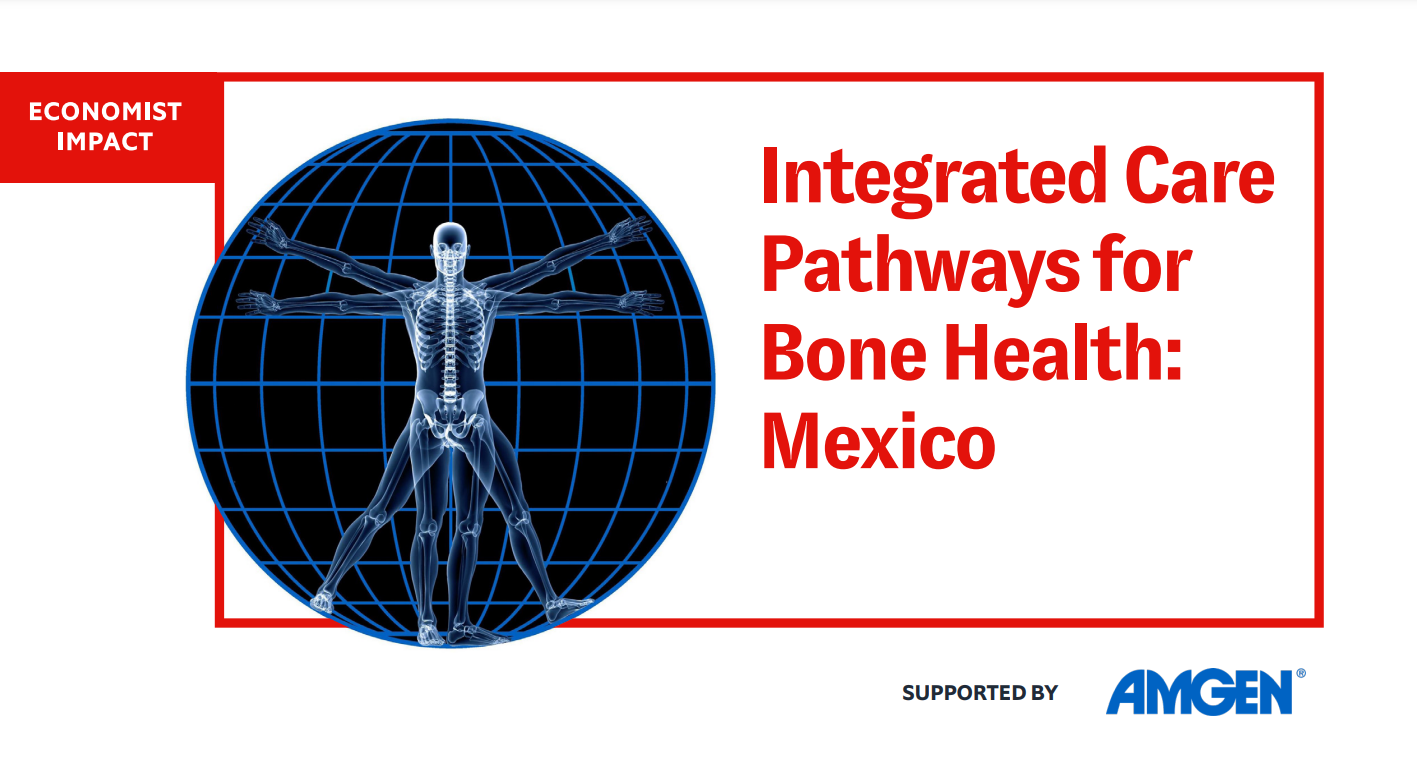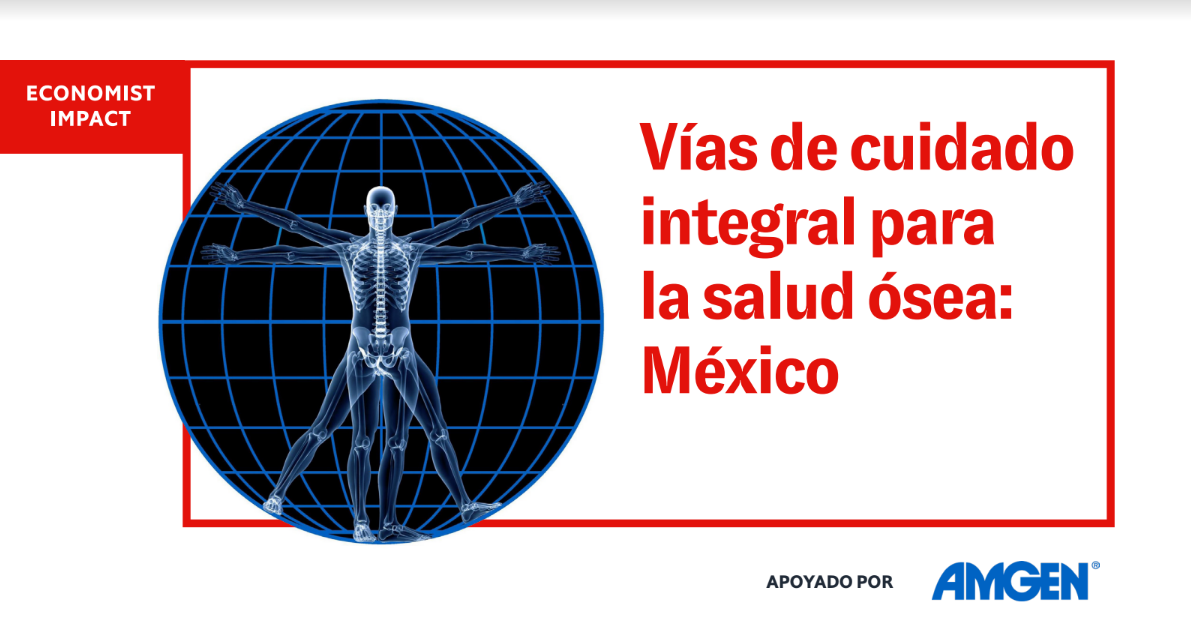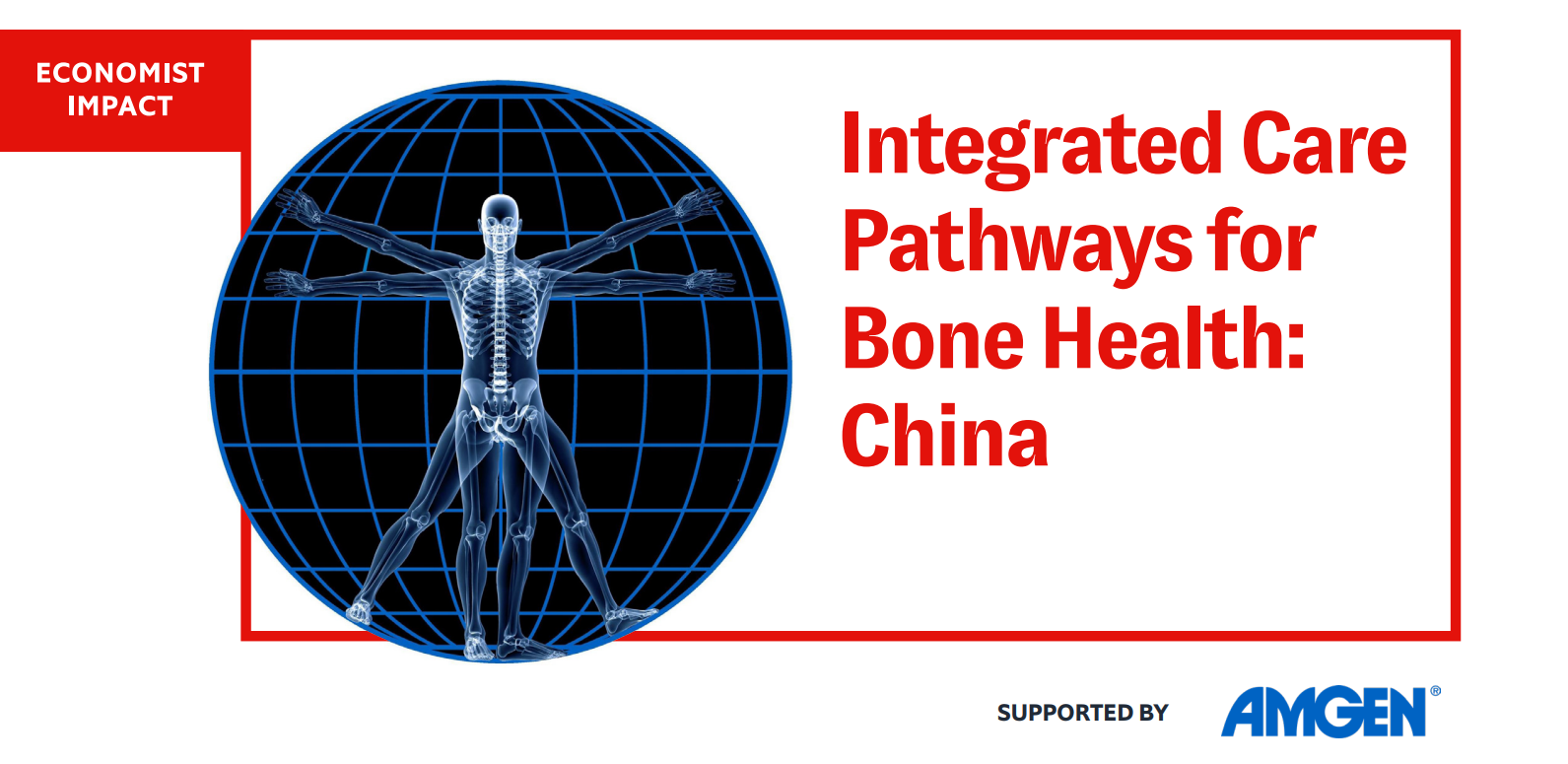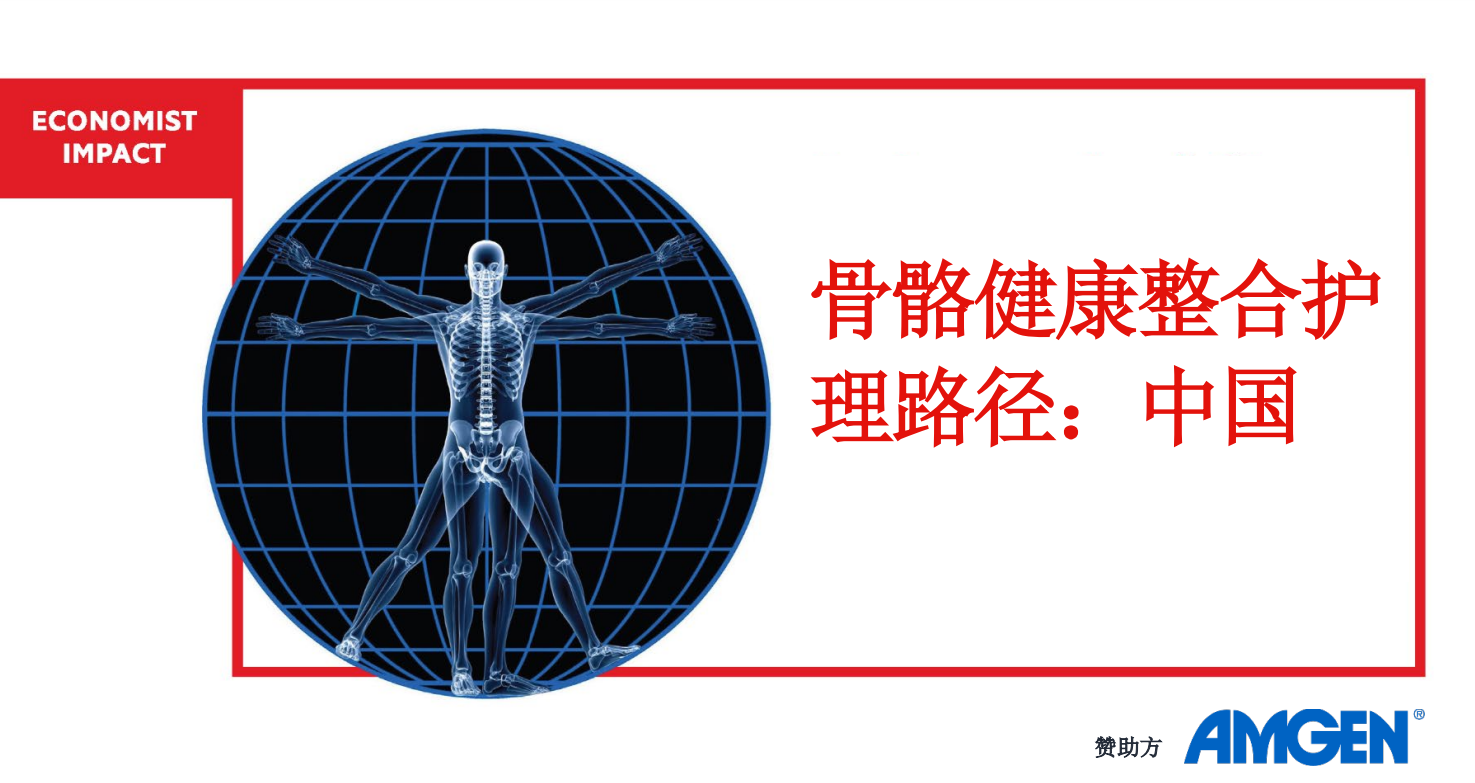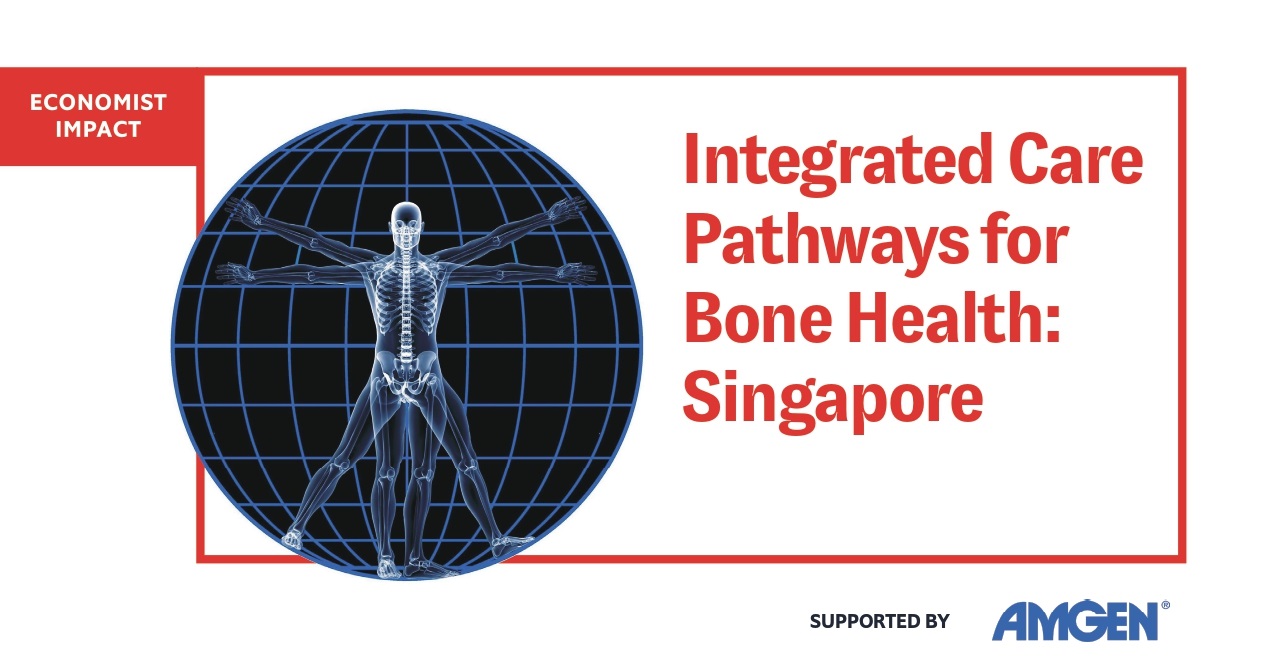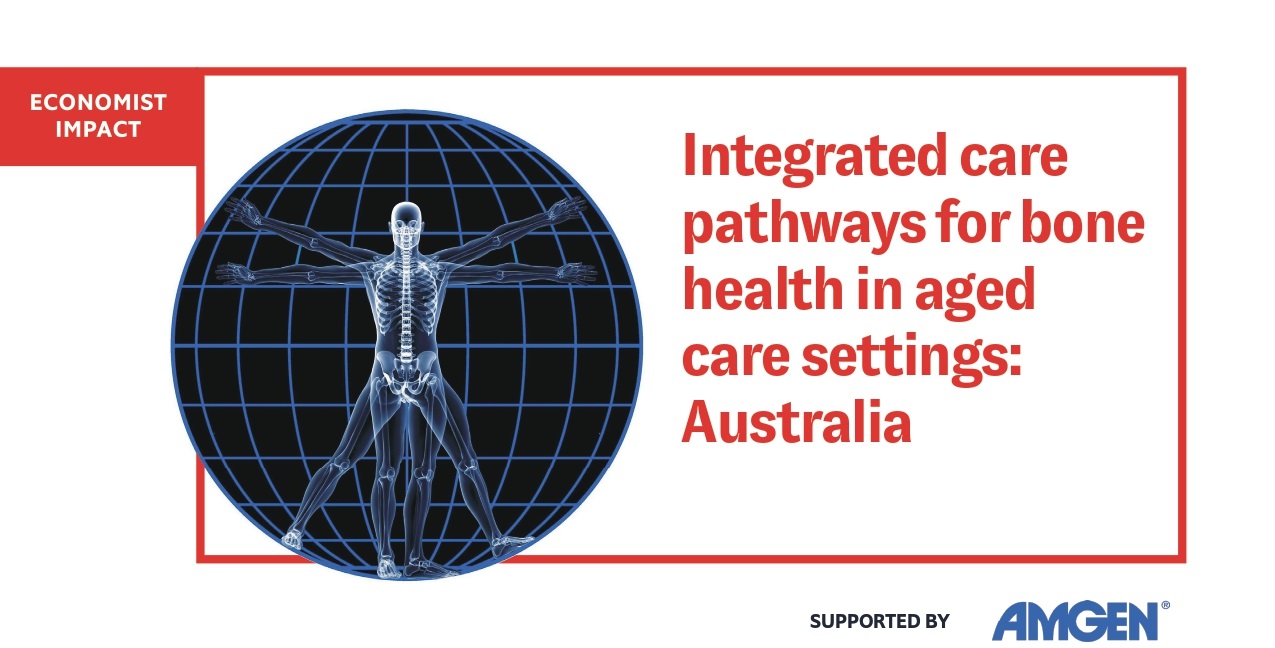Integrated Care Pathways for Bone Health: An Overview of Global Policies is a report by The Economist Intelligence Unit examining the global policy environment for bone health.
The goal of this research is to propose an integrated care pathway for bone health that takes into account the challenges and opportunities from countries around the world. This work examines risk factors for fractures, prevention strategies and other concerns associated with healthy ageing, as well as the economic and epidemiological burden of poor bone health across selected countries. We analyse how countries can build awareness, prioritise prevention, improve early detection and diagnosis and ensure access to high-quality treatment.
Our goal is to build and strengthen integrated care pathways for bone health throughout the life course by bringing together health professionals, policymakers and civil society to improve the care of bone health across the world. We hope to do this by providing an analysis of evidence-based best practices in effective health systems worldwide.
The Economist Intelligence Unit carried out an evidence review and convened an expert panel meeting monthly over a period of five months to help identify the critical components of an integrated care pathway for bone health which incorporated key building blocks of good practice in health policy and system development in the field of bone health. Alongside this, our researchers conducted a series of interviews with experts from around the world. Resulting from this research, and published alongside this global report, we have prepared a policy briefing paper presenting the rationale for having an integrated care pathway for bone health. Due to its concise nature, the policy briefing paper is a useful adjunct to this report, designed for those working in the field of health policy. The research programme was sponsored by Amgen.
Executive Summary
This report aims to provide a global scan of the current environment for bone health and present best practices of relevance for the creation of an integrated care pathway for bone health. Including an integrated care pathway for bone health in a country’s health system enables a multidisciplinary response that allows the right health professionals to practise the right care at the right time, providing continuity of care for an individual throughout his or her life course. The policy scan was conducted in alignment with the World Health Organization (WHO) Decade of Healthy Ageing 2021-2030. This initiative is a global collaboration forging alliances between a wide array of stakeholders such as governments, academia, the private sector and civil society to improve the lives of older people, their families and the communities in which they live. This work fits into the priorities of the Decade of Healthy Ageing by offering a platform for innovation and change. An integrated care pathway is an important tool for unifying the disparate aspects of care for bone health. To expand the co-ordination and comprehensiveness of services to improve health outcomes the pathway encompasses the integration of:
- primary and secondary care: a lifespan approach
- care delivery and service offerings
- pharmacological and non-pharmacological approaches
- social determinants of health
Throughout this report, the focus is on bringing together health professionals, policymakers and civil society among others to improve the care of bone health around the world. This report was written and published during the SARS-CoV-2 pandemic. Though health systems have had to focus almost exclusively on fighting this battle, we must not lose sight of other pressing health needs that will persist long after covid-19 has been defeated. Countries must build resilient health systems that are equipped to protect the most vulnerable populations, namely older adults. With populations rapidly ageing around the world, now, more than ever, the work of preparing and enabling health systems to better care for older adults is paramount. Rather than offer an in-depth analysis of any particular part of the care pathway, this report endeavours to offer an overview of the necessary components for constructing a fully integrated care pathway for bone health across a person’s life.
The key findings are:
Equipping primary care providers with the knowledge and tools to address bone health is critical. Though many care guidelines for bone health exist, few speak to the specific needs of primary care providers. An individual’s first contact with the health system is usually through their primary care provider, and in some systems, these general practitioners are the gateway into further care. Therefore, these professionals have a strong influence on treatment outcomes and their patients’ behaviour.
Building multidisciplinary teams in secondary care is crucial for bone health. There is no clinical speciality dedicated solely to bone health. This may make the delivery of care a challenge when it comes to this area of human health as providers with different types of expertise are called on to provide holistic and effective care. This means utilising professionals not only in the clinical environment but also in fields such as public health and social services to care for patients throughout their life course.
Investigating all fractures as a matter of bone health as opposed to trauma. The term ‘fragility’ can be stigmatising and may infer that nothing can be done for the individual who experiences a fragility fracture. In fact, all fractures must be properly investigated, particularly when they occur in older populations.
Experiencing poor bone health later in life is not inevitable. Osteoporosis and fractures that result from this disease are not a routine part of ageing; there are measures that can be taken to prevent the onset of such outcomes. Improving health literacy in a population through education and increased awareness can increase engagement in preventive measures such as screening and treatment.
Global Report:
Translated reports:
Country Briefing Papers:



